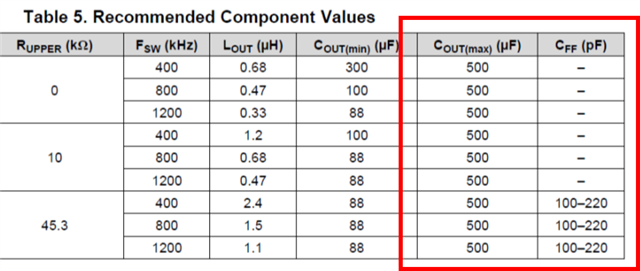Hello,
I have two questions regarding COUT(max) and CFF capacitance values of TPS568215.
- Is there any concern or care-about in selecting COUT(max) and CFF capacitance values larger than those recommended in Table 5 of the data sheet?
- The purpose of using the larger values is to try to minimize overshoot and undershoot voltages of the output against fast load transient responses.

- The purpose of using the larger values is to try to minimize overshoot and undershoot voltages of the output against fast load transient responses.
- Are those capacitance values in the Table 5 the actual ones that take into account de-rating by DC bias voltage? Or, are they nominal capacitance values?
Best regards,
Shinichi Yokota

